 Saving money and helping the environment are two good reasons why many Seattle residents choose to opt out of city water usage. Whether the application is for potable (drinking) or non potable use, like irrigation, supplementary tanks with even a small amount of storage can help drop water bills by as much as 80%.
Saving money and helping the environment are two good reasons why many Seattle residents choose to opt out of city water usage. Whether the application is for potable (drinking) or non potable use, like irrigation, supplementary tanks with even a small amount of storage can help drop water bills by as much as 80%.
Collect 624 gallons of water from 1 inch of rain with only 1,000 sq ft of roof area.
That’s water that you can use for irrigation, toilet flushing, laundry, or even whole house potable (drinking) use. That’s right! 624 gallons. If you have a 1,500 square foot roof area in the Seattle area, this equates to 33,642 gallons of available water. Water that you don’t need to pay for. You can save money on your water, and sewage bill and, over time, pay for your system with that savings. Depending on the application of the captured rainwater, you can supplement your usage through a simple collection system for irrigation or by plumbing in your toilets and laundry facilities. Or, if you choose to have a whole house system designed and installed by a professional, you can eliminate your municipal water usage altogether and have city water as only a back up supply.
Water quality of collected rainwater after filtration and UV disinfection is above that of a municipal water supply, as long as the system is designed, installed and maintained properly. Annual costs of maintenance is much less than your current water bill and is easy to do. Periodic cleaning of your gutters and screening devices along with filter changes a few times a year and replacement of the UV bulb once a year is all there is to it.
A decentralized private water system eliminates the possible threats to your drinking water from environmental concerns, water advisories, price increases, additives such as chlorine and fluorides and possible rationing, such as in California. You are in control of the quality of your water and its use.
Not a new concept, in the past few years, rainwater collection has become wildly popular as a safe source of water for households and businesses in Washington State. As with any industry, know your pro. An ARCSA accredited professional and ARCSA’s NW Regional Representative, RainBank’s Ken Blair has been designing and installing systems for 15 years. The team at RainBank is bolstered by an on staff engineer and plumber. When planning your system, consider RainBank Rainwater Systems to be your one-stop choice for design, water tank and component sales, installation and consultation.
This article was originally published under the title Rainwater Harvesting Lets Seattle Area Residents Opt Out of City Water at RainBank.info


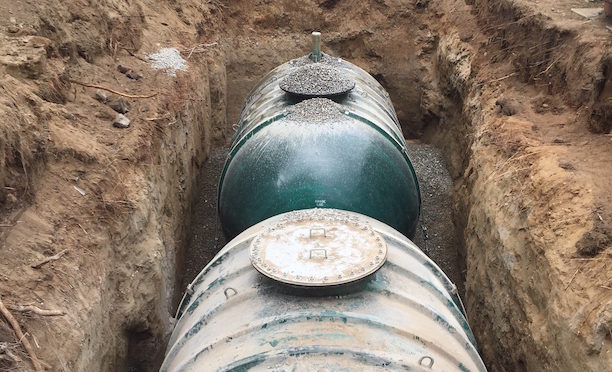
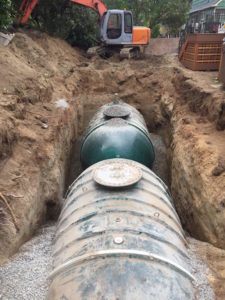 RainBank Rainwater Systems designed and installed a potable rainwater collection system for a remodel in Seattle City limits. The customer wanted to supplement city water usage with “as much storage as possible”, but had very limited space and aesthetics were a main concern. The solution came with two 5,000 gallon buried water tanks in the middle of a very small backyard.
RainBank Rainwater Systems designed and installed a potable rainwater collection system for a remodel in Seattle City limits. The customer wanted to supplement city water usage with “as much storage as possible”, but had very limited space and aesthetics were a main concern. The solution came with two 5,000 gallon buried water tanks in the middle of a very small backyard. 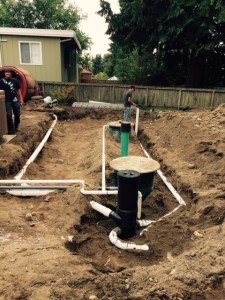 Always appreciating a challenge, RainBank dug right in with its awesome excavator, Shane, who managed to export over 120 square yards of soil off site, set the dead men anchors, and nestle the two fiberglass tanks in place with the touch of a feather. The buried tanks were strapped to the dead men (anchoring) and connected together with a 4″ crossover valve. He then backfilled 80% with 5/8″ drain rock while Chad, RainBank’s engineer, took careful deflection readings to be sure the fiberglass tanks were not being distorted during the process.
Always appreciating a challenge, RainBank dug right in with its awesome excavator, Shane, who managed to export over 120 square yards of soil off site, set the dead men anchors, and nestle the two fiberglass tanks in place with the touch of a feather. The buried tanks were strapped to the dead men (anchoring) and connected together with a 4″ crossover valve. He then backfilled 80% with 5/8″ drain rock while Chad, RainBank’s engineer, took careful deflection readings to be sure the fiberglass tanks were not being distorted during the process.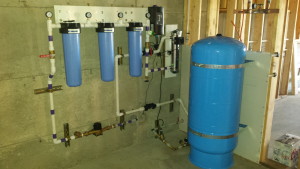 Our plumber, Tracy did a great job of use of space on this project. Using 4’x 20′ canisters with sediment, carbon, and 1 micron sediment for cyst removal, followed by a class “A” UV, the filtration train provides potable whole house demand. The system was designed to be easily maintained so the homeowner can be his own purveyor of clean, safe, reliable water. With the amount of collection area, annual rainfall and frequency, this two person occupancy should be able to meet 100% of its household use, but also have city water as a backup, just in case.
Our plumber, Tracy did a great job of use of space on this project. Using 4’x 20′ canisters with sediment, carbon, and 1 micron sediment for cyst removal, followed by a class “A” UV, the filtration train provides potable whole house demand. The system was designed to be easily maintained so the homeowner can be his own purveyor of clean, safe, reliable water. With the amount of collection area, annual rainfall and frequency, this two person occupancy should be able to meet 100% of its household use, but also have city water as a backup, just in case. 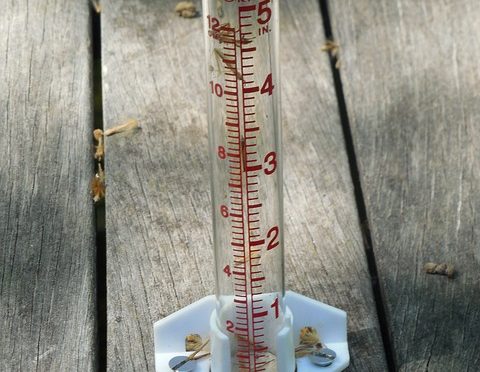
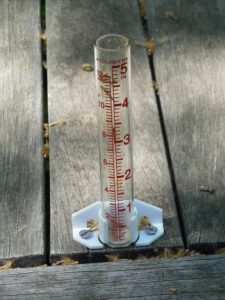 When you calculate area rainfall – measured annually, monthly and daily, plus factor in how the water will be used in the future, you can determine how much is storage is necessary to meet your needs.
When you calculate area rainfall – measured annually, monthly and daily, plus factor in how the water will be used in the future, you can determine how much is storage is necessary to meet your needs.